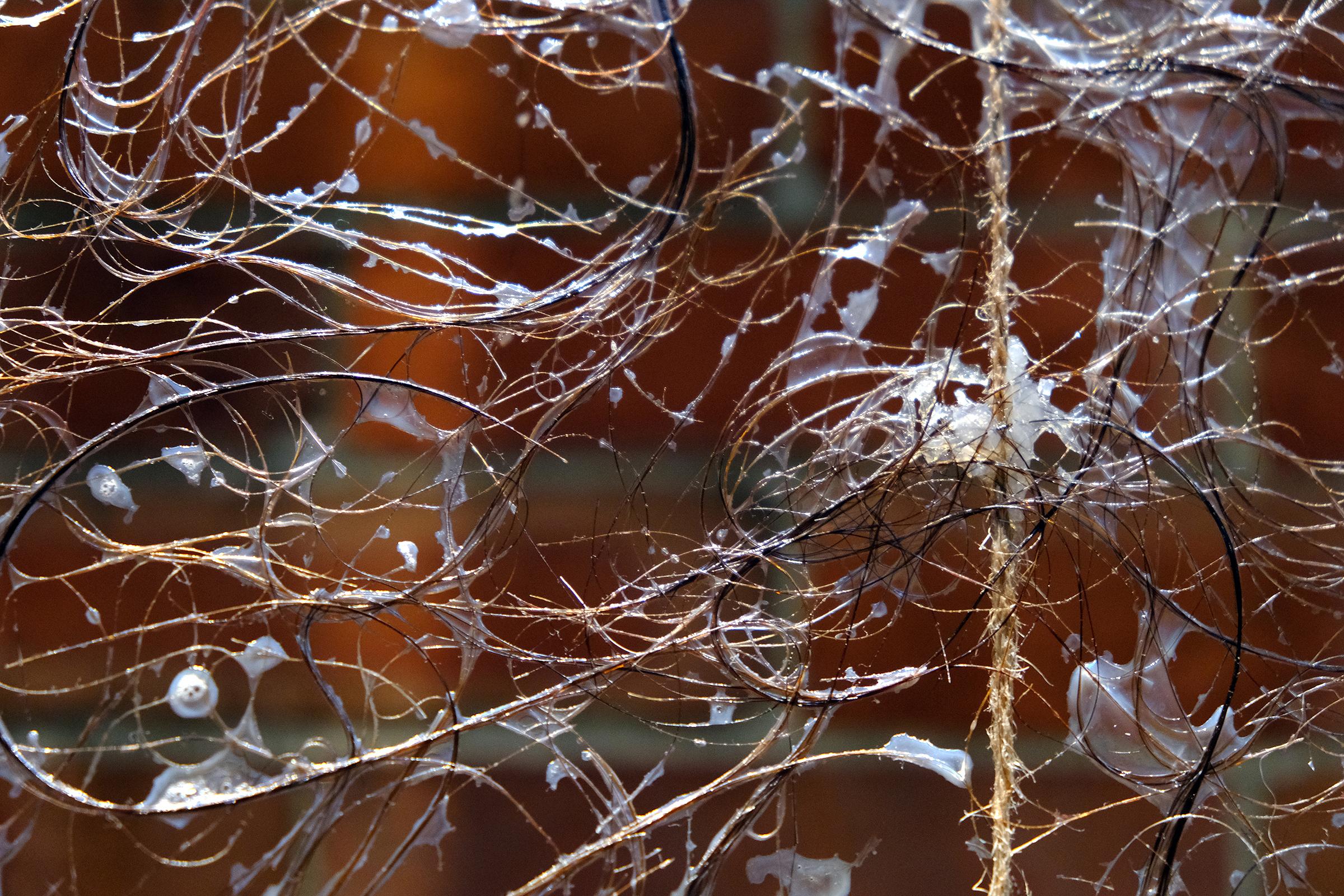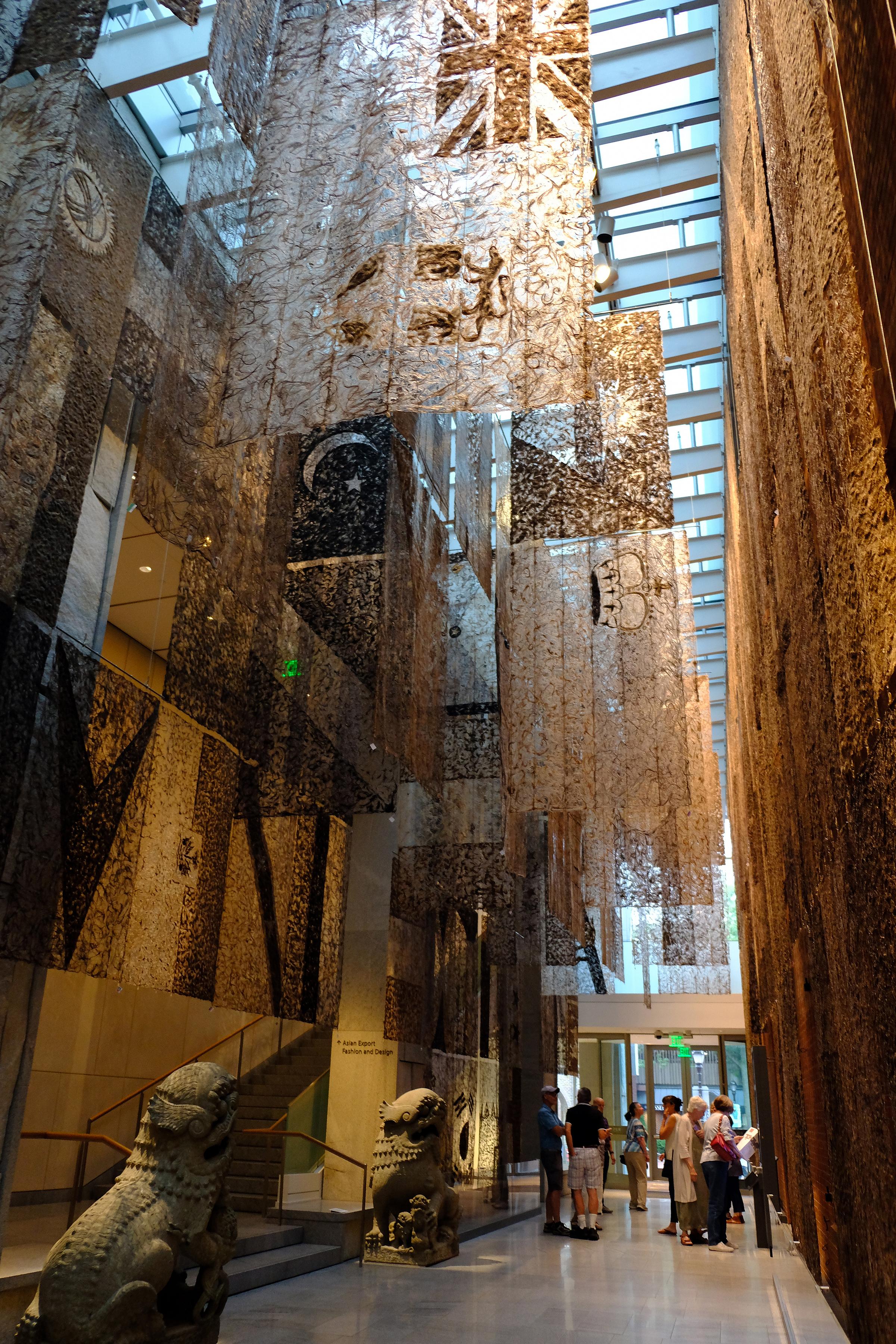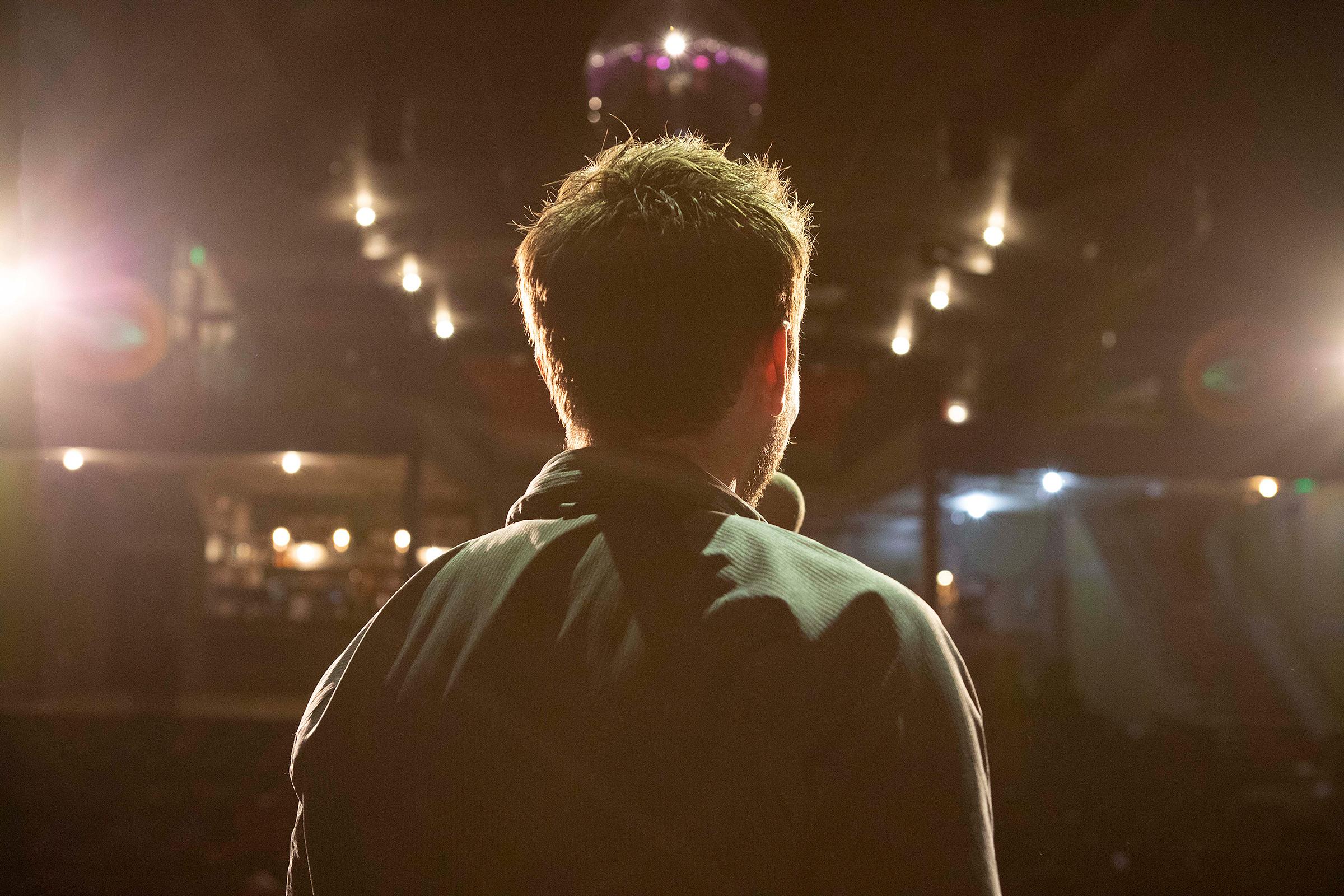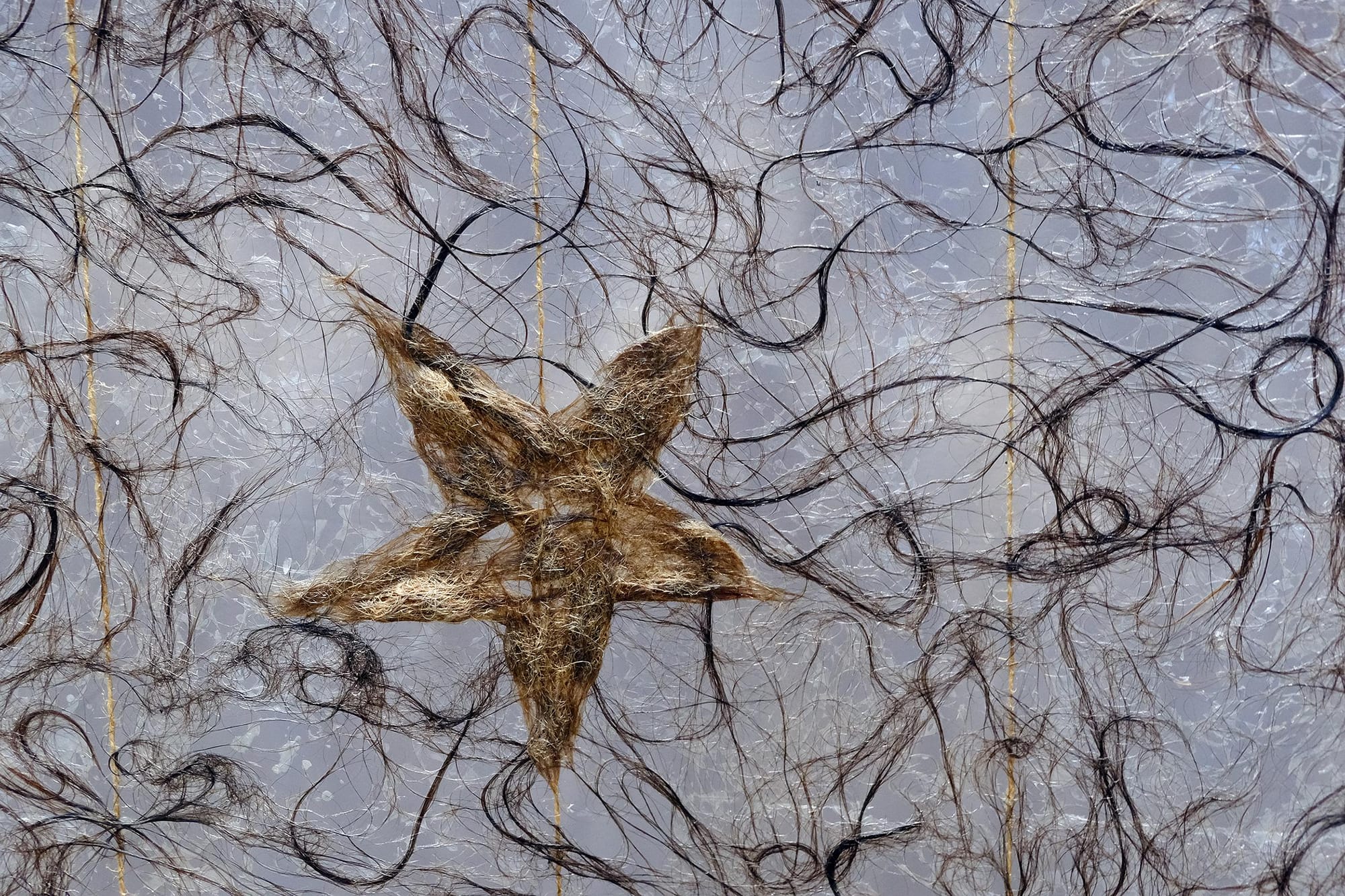The introductory video to Gu Wenda’s “United Nations” exhibit, currently on display in the Peabody Essex Museum in Salem, Mass., states that a single strand of hair contains enough DNA to identify one of us from a billion of us. When the Chinese-born artist creates his pieces from the combined hair of thousands of people, therefore, his work becomes a collective portrait that both transcends and unites the singular human experience.
This theme of individuality and connection was woven throughout a special Moth event that also took place at the museum. Participating storytellers were invited to view Wenda’s exhibition and then tell their own stories on the theme of “Hair.”


I walked into the “Hair” storytelling event about an hour early so I could be sure to see Wenda’s exhibition. My knee-jerk reaction to the idea of “art made of hair” was immediate disgust — maybe because hair used to be a part of the body, or maybe because I have nasty associations with disembodied hair, like finding it in a drain.
Gu Wenda’s approach to hair is thoughtful, intentional, and respectful, however, and I was taken by surprise at how beautiful I found it. The “United Nations” exhibition hangs in a large, open hallway lit from above with skylights. The hair hanging from the tall ceiling resembles woven tapestries which layer on top of one other like a patchwork quilt. From a distance, it isn’t obvious that the pieces are made of hair. They seem delicate, soft and intricate, and shine in beautiful earth tones that catch the changing light of the hall.
Up close, the details of the individual strands of hair become visible and appear like purposefully-arranged thread. Seeing the hair so close was a bit more shock-provoking, since up close the hair seemed much more lifelike, but I still found that my feelings tipped toward fascination, rather than disgust. The strands of hair managed at once to retain some of its essential unruliness — twisting and spiraling and clumping around what I assume are chunks of glue holding the piece together — while also being delicately and artistically arranged.
While the exhibition also included hair bricks that Wenda had used in another project to turn hair into ink, the main feature of the “The United Nations” exhibition consisted of 188 constructed flags representing member states of the U.N. The work isn’t meant to be political, or about the U.N. itself, but rather a larger statement on the shared commonality between all humanity and what united us beyond national, racial, and cultural divides.
The exhibition video mentioned that Gu Wenda has used hair from five million people since 1993, and a single piece uses the hair from 500,000 people. Gu Wenda explains that it was important for him that the hair be given freely, and also that he grew to learn the different cultural, social, and religious significance hair can have for different groups. I was surprised by how emotionally the exhibit resonated with me, and how present all the owners of the hair felt in the room. Like viewing printed hands in a cave painting, it felt like the people who had left these markings had just been there.

As the time for The Moth approached, I headed back into the main atrium to grab a seat. Volunteers with Moth-branded tote bags went around collecting slips printed with a prompt, giving the audience a chance to participate anonymously from their seats: “Tell us about a time you had a bad hair day.” (The responses read between performances were predictably humorous: “When I had hair,” “I’m having a bad hair decade,” etc.)
The host, comedian Bethany Van Delft, kicked off the event by outlining the rules and introducing the three audiences judging teams (“Bowl Cut,” “Follicle Follies,” and “Blonde Highlights”). Van Delft promised that the producer Julie would do some “math like an MIT grad” after all the stories were completed and calculate the final scores, which were tallied on a board on stage.
Although all of the stories were interesting and the audience was supportive, I found the best stories had, as the rules indicated they should, a beginning, a middle, and end, and were more than just a listing of humorous hair-related mishaps. Many people spoke of trying to fluff, struggle, pull back, put into place, mold, coif, and generally go to extremes to tame and subdue their hair, a task which was often accompanied by strong feelings about self-esteem, body image, self-worth, racial identity, and self-image.
Iman told a story about realizing that her hair was different from her white classmates’ and how it ties into her thoughts on professionalism, all of which came to the fore when she met a young hospital patient from Uganda and watched Black Panther with her.
Deborah told a story about how, in an attempt to hide her wet hair from her mother after being told she wasn’t allowed to go swimming one Memorial Day, she began headbanging on her bicycle on her ride home from a friend’s pool and ended up with a fractured neck.
Noemi told a story about the shame she felt when a comb broke in her thick hair on picture day.
The winning story of the night, and my personal favorite, was told by Donna, a put-together looking woman in a skirt and a blazer who told a story about a time she was heading out for a hair appointment and unknowingly ate two of her teenage son’s “special” brownies. Her story left the audience in stitches, earning her enthusiastic round of applause and whoops.
Overall, many of the stories focused on self-image and learning to live with mess and imperfections. Like the strands of hair in Gu Wenda’s exhibition, their stories were unique in their differences but united in their similarities.
Gu Wenda notes in his exhibition video that some people say that when human hair leaves the body it continues to grow longer — and that meanings can extend from the human body, growing and changing long past their point of origin. Similarly, The Moth spoke to how our stories don’t end with us, or in the moment in which they happened — we’re continually making meaning, learning to craft the strands of our life into something meaningful and beautiful, and figuring out where we fit into the larger human tapestry around us.
Still up: Gu Wenda’s exhibition continues at the Peabody Essex Museum through Nov. 5. https://www.pem.org/exhibitions/gu-wenda-united-nations
Where’s I’m going next:






